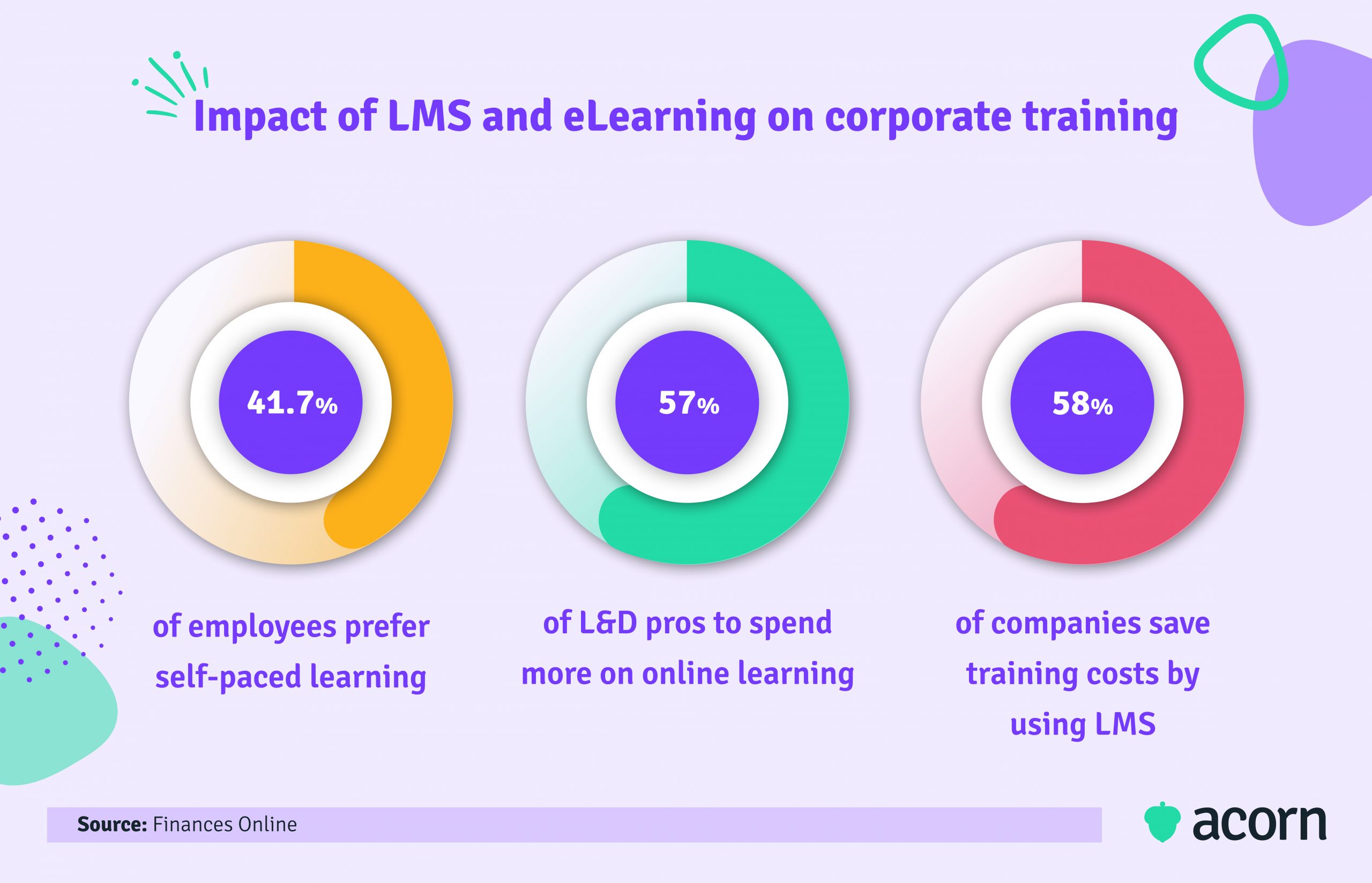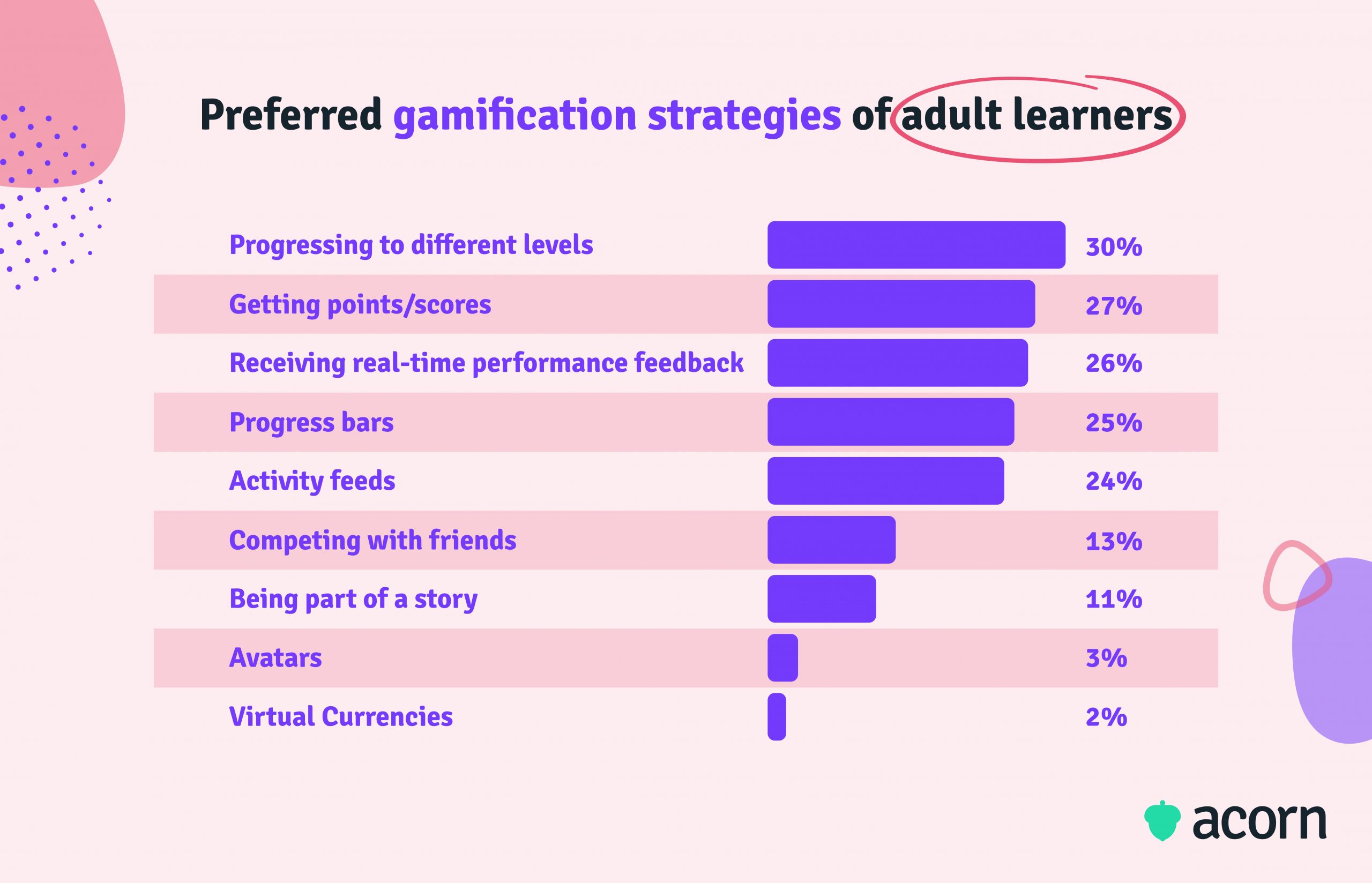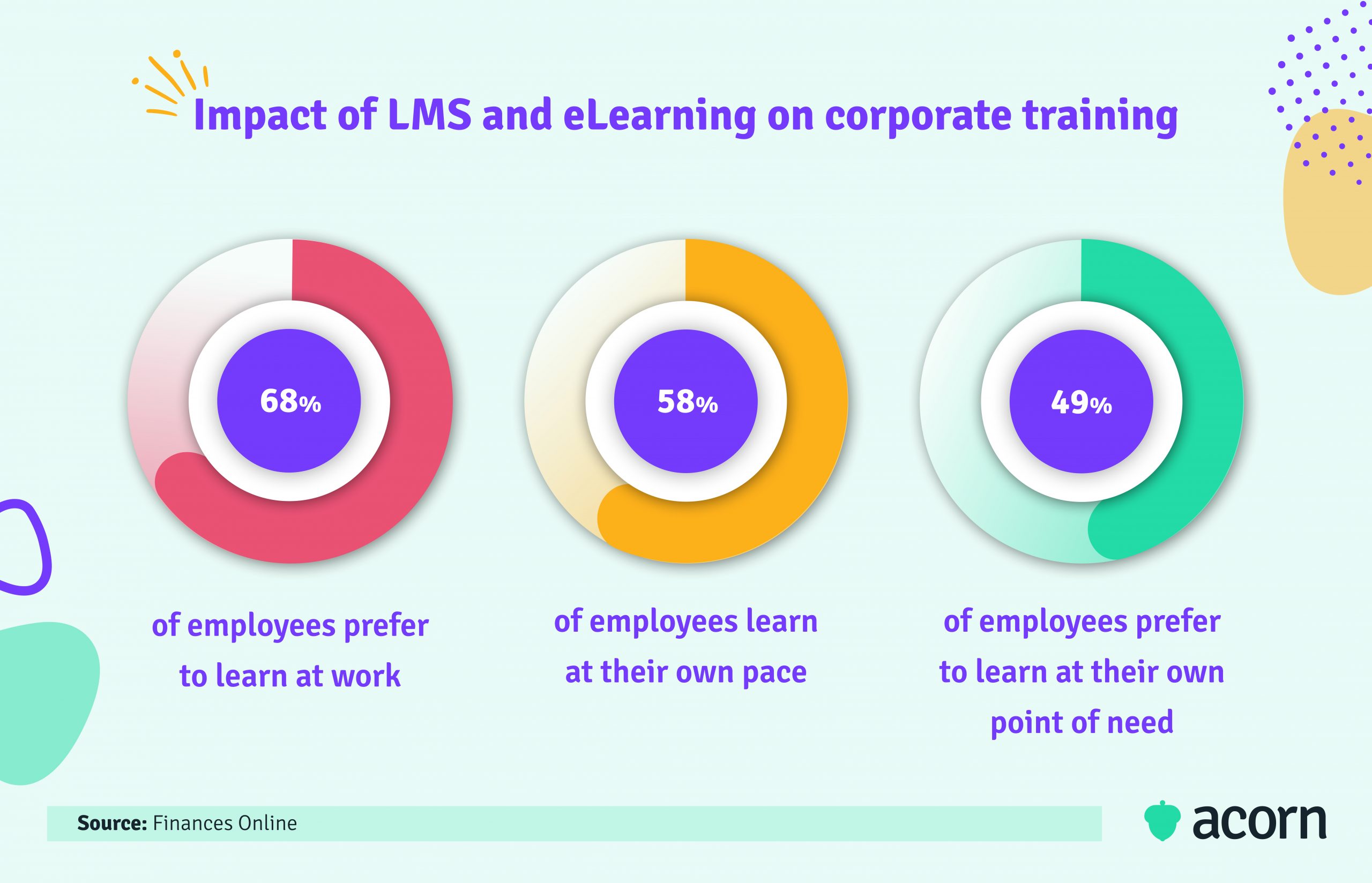How To Conduct An LMS Features Comparison

Plus a downloadable and comprehensive checklist you can take to vendors.
When looking for the right learning management system (LMS) for your organization, it’s not just about ticking off a checklist of features. You want to be sure you’re buying (the keyword here) a system that supports your learning and business goals.
An in-depth LMS features comparison is one way to understand what features will help you meet your goals, your maximum viable budget, and what your non-negotiables are.
This is our step-by-step guide to the most common LMS features and how to conduct your own comparison of LMS features in line with your goals. Let’s dig in.
Step 1: Choosing the right LMS vendor
When buying an LMS, you’re starting a new relationship. That’s because you’re generally not just procuring a system, but also a vendor.
That dictates the kind of support you’ll get, future features, and the user experience you and your learners will have. Let’s break that down.
- Different vendors maintain LMS features in different ways. Some will set a feature live and never touch it again. Others will provide ongoing maintenance. Others still will be hands-off with training, which means you’re on your own for implementation and internal training.
- The ideal target market for vendors directly impacts the future of their product. Vendors that target frontline workers will likely have induction and compliance training at the core of their system, which may not cover the full breadth of functionality you need.
- User experience (UX) should be a top priority, as it’s directly influenced by support and features. The better the experience, the lower the learning curve and higher your adoption rates.
Even if you’re looking at completely open-source learning management systems (meaning you’re footing the bill and burden of maintenance), you need to consider the future of the product and how that impacts your UX.
That’s why we say you say at a baseline, you need to consider an LMS holistically. Features are a large part of the procurement equation, but don’t forget to:
- Outline your business goals. No goals set for an LMS? Go back to the drawing board. Every LMS feature should align with an outcome in your organization, and the system itself needs to support your learning and development strategy.
- Consult the right stakeholders. If you’ve got a strategy set, you probably already know your key decision-makers. If not, talk to business leaders about their L&D needs and align that with your financial constraints so you’re not shopping outside budget.
- Look out for trial periods. Sales demonstrations can be tailored specifically to your defined needs, but they are a bit of a highlight reel in that regard. You can’t get a sense of the system’s learning curve based on someone else’s knowledge of it.
Also worth noting is that a sandbox environment is good to ask for in your tenders, as it will allow you to test new features before releasing them to the masses. This will also help if you like to pilot training initiatives.
Step 2: Understanding LMS functionality
The goal of L&D these days is generally to improve employee and business performance. Most modern LMSs are designed to provide business benefits as much as deliver learning. That means you should be looking for advantages like streamlining administrative processes, enhancing efficiency, reducing costs, and increasing employee engagement.
However, not all LMSs equally focus on business performance. Not all LMSs even really look at performance, period. You may find yourself with an LMS that offered in-depth reporting in marketing, but really only looks at learning completions. That’s fine for understanding high-level learner reactions, but doesn’t tell you anything about knowledge application, learning impact, or change in behavior.
Many vendors focus on skills, upskilling, and skills mapping these days. There are two drawbacks to this.
- Skills taxonomies are externally created and influenced, meaning they are not derived from strategy and expire quickly.
- They’re also often pulled into an LMS from an external party, which raises issues of how they are maintained or updated.
If you have skills mapped to specific content or job roles, what happens if the vendor or the taxonomy owner removes a skill? We evolved our LMS into a performance learning management system (PLMS) for this exact reason. Compared to the average LMS—that will integrate HR tech with your learning platform but still keep data separate—a PLMS intrinsically weaves performance and learning together.
The PLMS can define capabilities based on your business strategy, map those capabilities to learning materials, run capability assessments, and then provide personalized learning paths based on the identified areas for development. Oh, and it can do all that autonomously. All you need to do is verify the

If you don’t know what you need and what an LMS is designed for, it’s easy to waste time and resources that might be needed elsewhere in your organization. Like we said, vendors usually work within defined industries or markets. Without that added layer of research, it’s easy to procure an ill-fitting system and struggle through a clunky user experience, let alone one that helps meet your goals.
This could inadvertently communicate that you don’t understand your learners’ needs, diminishing buy-in and perpetuating negative perceptions of L&D.
Want to see Acorn PLMS features in action?
Hit the book a free demo button here, take seconds to fill in your details, and find out how Acorn can help you succeed.
Step 3: Defining the most important features of an LMS
We’ve seen too often the impact of thinking all learning management systems are cut from the same cloth—or, more accurately, built from the same code.
How authoring tools work for educational institutions differs from how they deliver training for a consultancy. If you don’t compare the functionalities of features across systems, you may find yourself without the capabilities you really need, leading to poor user experience and wasted resources.
With that in mind, let’s look at some-level categories of features. If you need a specific step-by-step, we’ve also created a detailed LMS Features Comparison Checklist you can download for free.
Administration
Administration is an umbrella term for tools that help you manage and track content, users, and progress. When you’re looking at review sites, key terms to watch out for include:
- Content management. These are tools specifically designed for organizing, storing, and distributing learning materials like content libraries, version control, template management, and content tagging.
- Tracking and reporting. Go beyond completion rates and look for functionality that speaks to the efficiency of your system, like automated reports, export options, and trend analysis.
- User management. Functionality that manages roles and permissions, like cohorts, self-service, and customizable user roles.
Learning analytics
Good analytics allow you to guide learner progress through learning paths, export user data, and create real-time reports. Again, key LMS terms to look for are:
- Learner progress. Think personalized learning paths, goal-setting, and capability and competency mapping.
- Data analysis. Advanced data filtering and custom report generation that drills down from the organizational level to individuals helps you improve training impact.
- Real-time reporting. Specifically, notifications, performance tracking, and live dashboards that can be customized for learners, supervisors, and administrators to see the most pressing metrics.
Content authoring
It’s not just about having a catalog stuffed full of learning content. You want to look specifically for elements of interactivity, engagement, and accessibility.
- Customization. Think beyond custom content (which we’ll touch on later) to custom certificates, course themes, and drag-and-drop course builders.
- Authoring tools. They’re not built in all LMSs, so you’ll either need to look for integrations or true authoring functionality.
- Accessibility.Mobile compatibility, screen readers, responsive design, and offline access are all key to user experience.
Integrations
Integrations vary between vendors, based on partnerships (mutually beneficial relationships between vendors) and the needs of their existing clients. There are also a few different buckets for integrations.
- Standard integrations. REST API enables the flow of data, OAuth supports secure authorizations, and xAPI and SAML are industry-standard protocols.
- Content. If you’re not building content, you’re probably buying it from third-party providers who will host their materials within an LMS’s library.
- Data and process automation. Your CRMs, HRIS, payroll, and the like are all able to integrate with LMSs and make it easier to manage people data.
A note of warning
Like all technology, the best learning management systems are constantly evolving. But with that comes some innovation for the sake of innovation.
You’ve probably seen every vendor and their dog talking about AI, specifically AI-generated content. But is creating mass amounts of content actually a good thing?
Yes, and no. Generative AI can make tedious processes easier and quicker, such as generating outlines and ideas and refining content for clarity. What it can’t do is evaluate the accuracy or relevance of that content. Once all that content is made, it sits in your content catalog and waits for learners to find it. Without context clues, learners can’t know what is important for them to learn. You also likely need to do further refinement or customization to ensure content meets your company’s branding.
If you see AI-generated content, look for auxiliary features that make it usable, like:
- Content tagging. Helps organize and categorize content based on topics, difficulty levels, or learning objectives.
- Capability mapping. Links individual pieces of content to specific capabilities, so learners know what is needed for their job roles.
- Development plans. Provide structure by putting only the most immediately impactful content in front of learners.
- Recommendations. Some AI will also recommend content based on learners’ past activities, interests, and competencies.
Not every vendor’s going to offer these. We dive a little deeper into cutting the fat of marketing jargon in the next section.
Step 4: Assessing LMS features by use case
In tech speak, functionality essentially refers to what a feature—or all features in a system combined—can do for a user.
When comparing features, you’ll want to know what they’re meant to do for you given:
- The industry you’re in
- Your need for the LMS
- System functionality that addresses that need
- Your business goals.
Let’s look at some of the more common use cases for LMSs, and how that can impact the features your organization needs.
Employee training
Using an online learning platform for employee training programs is not new.
But the reasons for providing employee training change from pure compliance to supporting business goals. That means you need to think more shrewdly about classic LMS functionality. For example:
- To support personalized learning paths, look for systems that map learning content to the capabilities of learners’ job roles. Bonus points if they can do this autonomously, reducing manual effort for you.
- For reporting and analytics you’ll actually use, dig into types of reports and who can view them. Acorn, for example, shows capability gap analysis within a learner’s dashboard.
- For blended learning, think about how you can manage and support coaching and mentoring. Automating form-based processes impacts the speed at which online training hits, and the manual effort required from you to manage them.
You pay a high price for a system that does not address business goals. Employee engagement tends to drop, bad performance can fester, valuable capabilities go untapped, and your L&D initiatives will fail to hit the mark.
Too long; didn’t read (TL;DR)
As corporate training moves towards a holistic approach to learning and performance, your LMS should follow suit. You should be able to offer every learner their own EVP and reason to engage with L&D.
Content library
Your classic standard content library generally pushes content. That means an organization, administrator or instructor decides what content is relevant for a learner. You may have noticed a shift the last few years to learning experience platforms (LXPs) that pull content, i.e., systems that curate training content for learners to find themselves.
We don’t recommend putting too much stock in the latter. Oh, and don’t get blinded by flashy AI-generated content. LXPs were a trend that is now on the way out, and it’s better to look for a learning platform that can both push and pull content at the right time. Take the PLMS.
- You can assign content to learners based on the capabilities of their job role, pushing structured learning pathways.
- Learners can pull capabilities and content they’re interested in into their development plans.
It’s also worth thinking about how you can segment course catalogs for different tenancies or user groups. If you service external learners, look for:
- The ability to customize multiple tenancy libraries
- Secure access with Single Sign On (SSO)
- The ability to integrate your catalog with other websites
- Library access without a login, so learners can browse content without an account and you can create demand.
TL;DR
Think less about the library and what it’s populated with, and more about how it makes content findable and accessible for learners.
SCORM compliance
If you want to be able to pull content from and send it elsewhere in the learning realm (e.g. LinkedIn Learning, Percipio, Go1, etc.), you’ll want to look specifically for:
- SCORM authoring
- Remote content sharing.
Not all LMSs offer course authoring. This isn’t a bad thing; we don’t include it in Acorn’s functionality because a) there are already many reputable authoring tools on the market, and b) we want to focus our energy on the major features of our platform, where our time is best spent.
Let’s say you have multiple tenancies within the one system, or you share your content with other learning providers and LMSs. You’ll want an LMS that enables you to easily share SCORM content between tenancies and systems while maintaining a master version and security. Bonus points if you can report on SCORM completions in other systems, too.
The version of SCORM or TinCan that LMSs and authoring tools will support will also vary, so keep an eye out.
TL;DR
SCORM compliance is the baseline. Look for systems that allow you to share and report on SCORM content from one location.
Blended learning
You need functionality that makes learning engaging but still delivers content in the most appropriate format. Look not just for synchronous (real-time) or asynchronous (self-paced) activities, but a blend of both to create personalized learning paths or development plans.
Consider synchronous learning through the lens of feedback. Most performance conversations are handled yearly, which can allow recency bias and misses opportunities to correct performance in the moment.
Real-time interactions not only enable learners to validate new capabilities in a social setting, but also collect valuable data on engagement, participation, and learners who need extra support. If you’re a larger organization with learners across locations, it’s also an easy way to train cohorts. Look for how you can complement this with async activities like quizzes for knowledge testing—rather than just logging completions.
Avoid the same pitfall we mentioned under “content library”. Learners want clear pathways for progression, sure, but it’s a bit of a myth that learners crave total freedom of choice. LinkedIn Learning’s 2024 Workplace Learning Report found learners who set career goals engage with learning four times more than those who don’t set goals.
TL;DR
The best learning management system will make relevant content discoverable with personalized development plans, so that learning remains impactful and meaningful.
Gamification
Gamification incentivizes learning by offering points, badges, leaderboards and other achievements for course progress and completion. The idea is to create a positive motivation (reward) with L&D instead of a negative connotation (punishment) when training isn’t completed.

Modern gamification is often bolstered with AI. Again, we recommend not getting caught up in the hype. Gamification alone can be a superficial motivator if only used to boost completions or complete one-off courses. Consider how they may be more meaningful in conjunction with certifications or CPD, so learners and leaders can see who has completed certain training.
Look at how you can tie this into other features we’ve already mentioned, like goal-setting and development plans, to make gamification a long-term motivator.
TL;DR
Use gamification to assess who has completed what training, rather than how many courses, for a more impactful use case.
Certification & compliance management
In industries with ever-evolving legislation, the ability to automate compliance is key. Dig deeper into compliance functionality when doing an LMS comparison. All LMSs can feasibly help you manage compliance, if we’re talking about completing certain content by a certain date.
Automating workflows, refreshers, and reminder notifications means no one is accountable for every learner’s deadline but the learners themselves. (And even then, they don’t have to think about it.)
Again, look to other functionality here.
- Do you need curated content from third-party providers for the most up-to-date training materials?
- Can you map compliance content to job roles, to ensure that information is put in front of learners at the right time?
- Can you build and trigger notifications across your entire organization?
TL;DR
Prioritize automated compliance features like reminders, curated content, and role-based content mapping to make your life easier.
Accessibility
There are a few factors to consider here. First, does your LMS use responsive design for different devices?
Second, if it’s cloud-based, can it be accessed offline? Will it store any progress or completion data in offline mode?

Third, what systems and browsers is it compatible with? Internet Explorer 11, for example, is available in Microsoft Edge’s IE mode but not supported by many learning systems but still used by many.
Fourth, accessibility standards differ between regions and vendors may be aware of all of them, especially if they’re used to operating in certain countries. For example, Australian government agencies need to have a WCAG compliance of AA+ to be accessible for people with disabilities.
TL;DR
Accessibility makes for a more inclusive platform but covers a broad mix of responsive design, offline access, accessibility standards, and operating systems and browsers.
Performance tracking
If the purpose of your learning platform is to track progress to performance outcomes, then it follows you need functionality that supports that.
A user-friendly dashboard for tracking and reporting is a staple feature of most LMSs. But you want to dig beneath the surface to see how customizable those dashboards are. Widgets are the keyword here. At the organizational level look out for LMSs that enable you to build custom dashboards for different cohorts, so you can put the most important stats in front of them.
For individuals, Acorn’s capability gap analysis shows learners the current status of their own proficiency against the expected level for their role. Also look for progress bars to track learner progress and whole-of-organization reports for strategic planning. If you’re still choosing an LMS over a dedicated PLMS, make sure it can integrate with other systems for a complete view of performance and has feedback tools to keep training aligned with business needs
TL;DR
Performance tracking should show you individual and organizational progress to goals.
Multi-tenancy
A lot of LMSs will push white-labeling. While a key feature, there’s a step before branding: multi-tenancy.
We work with many organizations with diverse learner groups. Even within those groups, they need to offer unique learning environments. Look for LMSs who offer tenancies that can be branded and personalized for every group. Bonus points if you can whittle down cohorts within tenancies, too, for even more learning personalization.
Aside from customizing colors, widgets, logos, and the like, you want other features like:
- Self-registration and enrolment for ease of use
- User permissions, particularly users who can move between tenancies
- Tenant-level reporting and analytics
- Data isolation and security, so learning and personal data are secure within cohorts and tenancies.
TL;DR
Vet how an LMS can personalize and make secure learning environments for different learner groups beyond customization.
Payments
Most LMSs have payment integrations like Stripe. What’s more pertinent to think about is processes and the experience around payments.
Firstly, see if you can add payment options to online courses before learners enroll. This ensures learners have seamless transactions, and that you can charge for courses upfront.
Secondly, look for tax integrations. We know local tax regulations can vary, particularly in the U.S., and manual calculations are prone to error. Acorn, as an example, integrates with Avalara AvaCloud to automate tax during payments, so you can stay compliant.
Bonus is a learning management system that stores and manages transaction history. This’ll help maintain accurate records, streamline financial management, and keep all your receipts in one place.
TL;DR
Look for systems that are flexible with when payments are made, store your transaction history, and offer tax integrations.
Licenses
A little segue into pricing, but worth a shout-out.
There are a few pricing models on the LMS market, from pay-per-active-user to pay-as-you-go. These are largely influenced by the type of LMS and its target market. Continuous learning within an enterprise will generate different usage from seasonal external learners like consultants or partners.
The key is to get licenses that only charge for what you use. For external learning, that could be monthly passes (akin to monthly gym passes) to save you money, surprises, and headaches and generate demand, while giving learners enough time to access training.
Something else to look out for is how products are bundled within a suite, given the demise of the LXP and rise of integrated performance learning management systems. At Acorn, we still keep pricing separate for our four core products to allow you to customize your PLMS in a way that makes sense for you. Other vendors may still charge you for all the separate products under the one umbrella term.
TL;DR
Consumption-based pricing will get you the most bang for your buck, and help you understand annual outlay for better budgeting.
Key takeaways
Essentially, you want to understand two things through an LMS features comparison.
- What you need the system to be able to do for you, what problems it should solve, and what opportunities it can create.
- How it can fulfill your business requirements through features and functionality.
Understanding the problem and ideal solution will make it easier to narrow down the top learning management systems for your needs. In some cases, you might learn you don’t need a learning management solution after all, but an authoring tool or a talent marketplace.
From there, you can start narrowing down the learning management system features that are truly worth enquiring about, especially because how they function will differ between LMS vendors.
- Training: Align business goals with individual performance through capabilities.
- Content library: Focus on how content is made discoverable and accessible for learners.
- SCORM compliance: Ensure you can share SCORM content wherever you like and still report on it.
- Blended learning: It’s less about the activities and how they combine to make personalized development plans.
- Gamification: Turn this short-term motivator into a long-term goal-setting tool.
- Certification & compliance: Automate these with role-based content mapping and reminders.
- Accessibility: Think security for the organization and inclusivity for the learner.
- Performance tracking: Can you create custom dashboards so everyone knows how they’re progressing to goals?
- Multi-tenancy: The more learners, the more secure and contextual learning environments you’ll need.
- Payments: Go for native payment and tax integrations.
- Licenses: Optimize budgeting and understand usage with consumption-based pricing.
If all else fails, check out our free LMS Features Comparison Checklist to get started.